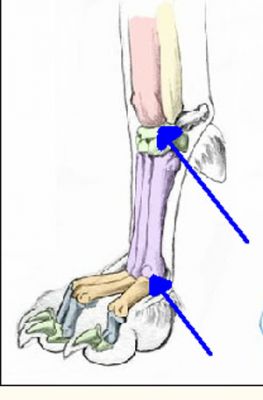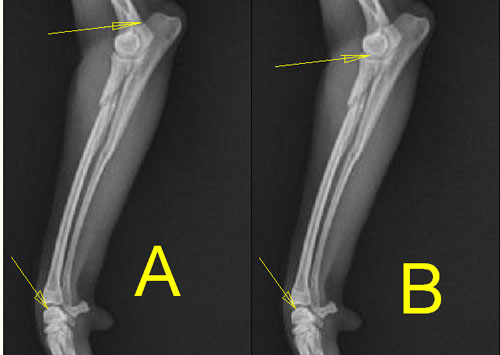
This is a placeholder text
Group text
by Louis Donald on 09 July 2012 - 22:07
Louis
by Ibrahim on 10 July 2012 - 07:07

by Ibrahim on 10 July 2012 - 07:07

by Louis Donald on 10 July 2012 - 09:07
Louis
by Ibrahim on 10 July 2012 - 10:07
Maybe 1/3 rd is true when we ad the pad thickness to the pastern bone, and then compare it to {the distance between elbow joint (where both the Humerus and Radius meet) upto start of pastern}, like in the sketch below. Red/Green= 1/3, What do you say?
Anyhow I think it is too difficlt, rather impossible for a man to measure these distances and proportions physically on a dog.
.jpg)
by Louis Donald on 11 July 2012 - 13:07
The 1/3 is elbow to pastern and as you said it is a visual guide and I suspect it most likely includes the toes. One would normally make a visual assesment using the elbow as a reference point and one could say the variables and finer detail being discussed are semantics but it is interesting if you enjoy the finer detail of these things especially when it comes to measuring.
Louis
by Hundmutter on 11 July 2012 - 15:07
I have to hand (including an early German one) neglect to mention the 1/3 measurement; either that
or I can't see the wood for the trees. I was thinking this was a little odd, since the '1/3' gets referred
to / used frequently enough, it must come from somewhere.
None of the resources I've looked through (as I told you they are limited 'cos some are still in storage)
discuss it in text, either - although they mostly have descriptions of the bone and the ligaments and the importance of proportion to achieving a correct gait, etc etc. And they all mention the difference between:
WUSV / FCI 20 degrees
UK 20-23 degrees
USA 25 degrees 'from the vertical'.
I guess the difference evolved from various countries changing the Standard to suit their own dogs.
Or the USA Standard chooses actively to 'do its own thing' re the B to D measurement, in the face of
everyone in Europe thinking it should be B to C. ?
So I measured Taz, instead ! (Why think it impossible to measure ON the dog ?)*
He has this set of measurements:
A to B 21 cm
B to C 7 cm
B to D 8.6 cm
Case closed ?
L.
*Edited to add: OK, OK, I couldn't measure the ANGLE on the dog !!! Hehehe.
by darylehret on 11 July 2012 - 16:07
by darylehret on 11 July 2012 - 16:07
by darylehret on 11 July 2012 - 16:07
Contact information Disclaimer Privacy Statement Copyright Information Terms of Service Cookie policy ↑ Back to top




